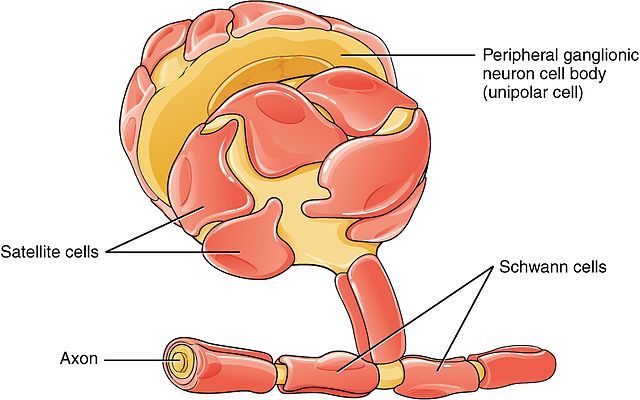Recombinant Protein Expression: How to Choose the Right Affinity Tag
Using the right affinity tag can make protein purification a breeze. Read more to find out which tag is right for you.
Join Us
Sign up for our feature-packed newsletter today to ensure you get the latest expert help and advice to level up your lab work.
Search below to delve into the Bitesize Bio archive. Here, you’ll find over two decades of the best articles, live events, podcasts, and resources, created by real experts and passionate mentors, to help you improve as a bioscientist. Whether you’re looking to learn something new or dig deep into a topic, you’ll find trustworthy, human-crafted content that’s ready to inspire and guide you.

Using the right affinity tag can make protein purification a breeze. Read more to find out which tag is right for you.

Discover how to check DNA quality for long-read sequencing using electrophoresis and why pipetting carefully is so important.

Discover how structured illumination microscopy works can help you see things in greater detail.

Stop wasting time throwing out slide after slide trying to create a readable blood smear. Read our how-to guide for creating the perfect blood smear slide.

The electron microscope (EM) – where electrons, rather than photons, make the image – fell out of fashion for a while, but it has come back refreshed. Modern electron microscopes cost less, use less electricity, and are generally easier to maintain than the older models, so it is likely that you can get your hands on one. Read on to learn more about this technique, and how to implement it into your research.

Are you an immunologist or lab personnel dealing with counting tons of cells? Then you must have come across the elusive Coulter Counter! Read on to know a little history ofthe instrument’s technology and its working principle.

Feeder cells – your solution to difficult-to-grow cell problems. Find out what they are, why to use them, and how.

Working with mice doesn’t have to be intimidating. Read these tips to help keep your mouse-based experiments running smoothly.

Are you struggling to answer your research question using established models? Consider going rogue and switching to a non-model organism!

Yes, you can infect your eukaryotic cells with bacteria on purpose! Find out why and how in this article that lists steps for successful and productive infections.

Want to reduce the use of antibiotics in the lab? Start with switching to alternative cloning methods that use alternative selection pressures.

Shared microscopes have the potential to get dirty and spread nasties between samples and users. Check out our quick guide on how to clean and disinfect your microscope.

If you’re confused about what N numbers mean for cell lines, you’re not alone. We explain it all and give you a guide on best practice.

When microinjecting zebrafish, time is of the essence. Read these tips and tricks on how to prepare ahead of time and ensure a successful microinjection.

Discover how CRISPR can be scaled up for drug screening applications.

This followup article on HPTLC gives a list of dos and don’ts while performing HPTLC to achieve precise and error-free results, and avoid false positives.

Get robotic with HPTLC! This automated version of TLC can separate and quantify compounds – find out how!

Want to increase siRNA stability and efficiency? Read on to learn five chemical modifications that will help.

There’s no need to shop till you drop. Our guide to where to get your next cell line from takes the stress out of cell line shopping.

Find out how CRISPR-mediated gene activation (CRISPRa) and repression (CRISPRi) work and why you should consider using them in addition to your CRISPR knockouts.

Discover two CRISPR-based viral diagnostic strategies, DETECTR and SHERLOCK.

Fret no more over fuzzy bands! We uncover how gradient gels can give you better results, and maximize your precious samples when performing SDS-PAGE

Find out how modified variants of CRISPR nucleases provide gene editing with reduced off-target effects and can even control gene expression without altering the DNA sequence.

Discover how to validate your CRISPR gene editing, from the successful delivery of CRISPR reagents to the confirmation of desired genetic and phenotype changes.

Discover how to get started with CRISPR gene editing in your experiments with our key considerations.

3′ mRNA-seq is a NGS method to profile gene expression that is sensitive and straightforward but won’t blow your budget.

We are all familiar with bacterial cell lines as a means for protein expression and purification. But can you do the same with eukaryotic cell lines? Read on to learn some helpful tips and considerations when needing to get your hands on some eukaryotic protein.

While DNA and RNA extraction is a pretty common technique, it isn’t always the easiest. Read on to learn some top tips on how to successfully extract nucleic acids from even the toughest samples, like Arabidopsis seeds.

Mitochondrial DNA isolation can be time-consuming and laborious. Find out how to minimise the time needed for its extraction, while ensuring fantastic results.

There is an overwhelming selection of cell lines available, make sure you pick the right one for your work using our tips.

When it comes to profiling miRNAs there are lots of platforms available. We discuss the pros and cons of various miRNA profiling methods to help you choose the right one for your needs.

Are your cell membranes more of a hindrance than a help? Struggling to sneak your DNA inside? Why not break out and take your expression or metabolism studies cell-free. Find out the what, how and why of cell-free systems.

Bioinformatics isn’t just for genomics geeks – there’s something for everyone!

Now that you’ve chosen your perfect primary Schwann cell line, it’s time to culture! Read on to learn how to do so with ease.

Bioinformatics and NGS go together like peanut butter and jelly. But if you’re just starting out with these techniques it can be daunting.

Does the term “ultracentrifuge” make your heart begin to race? Fear not! This article will provide you with tried and true tips on how to handle this piece of machinery like a boss.

T4 DNA ligase is the swiss army knife of ligases, but it can’t always do it all. Find out what it’s good at and the alternatives available for the things it struggles with.

Have you been itching to branch into working with Schwann cells for your next experiment, but aren’t quite sure where to begin? This article will help you decide which primary Schwann cell line is best for your needs.

Don’t be daunted by imaging and analyzing your wound healing assay; our top tips will get it looking perfect.

During my first year of graduate school, I learned how to isolate bone marrow. I remember watching my mentor in awe, wondering how would I be able to do such a difficult technique. Flash forward to a few weeks later and I was confidently undertaking bone marrow isolation. Learning a new technique is always daunting,…

The eBook with top tips from our Researcher community.